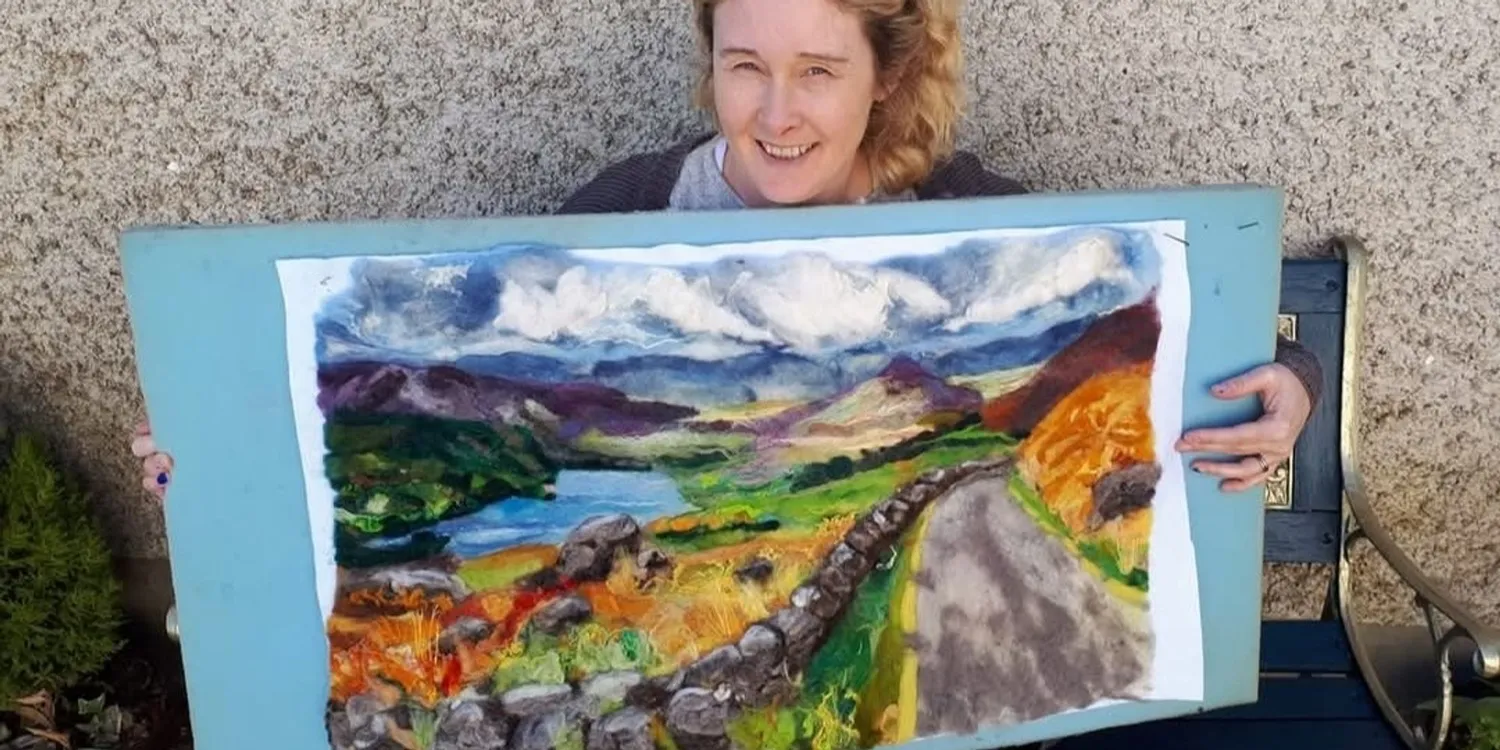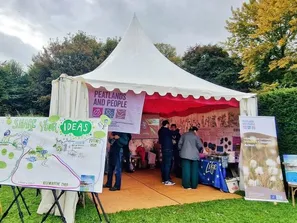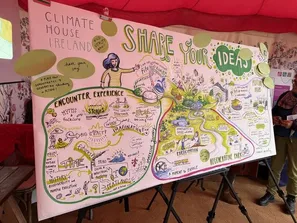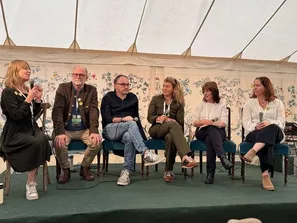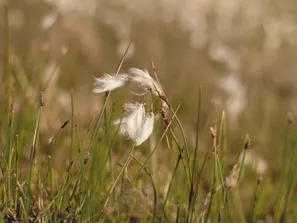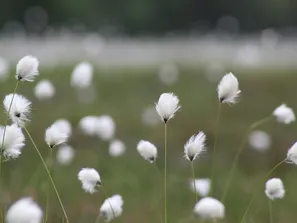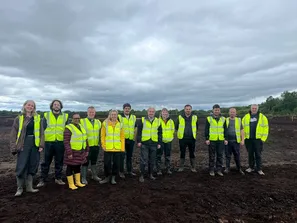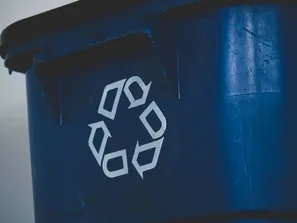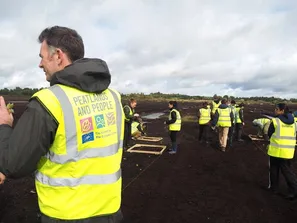04 Sep 2025
The Irish natural landscape and scenery, with its vibrant colours of mountains, boglands, and the sea, have stirred the hearts of many. For Sharon Wells, a feltmaker from Kerry, Ireland, it is her main source of inspiration for her artwork.
Sharon was seven years old when her family moved from England to her mother's home in Kerry. Her childhood on a farm in Kerry and the landscape that surrounded her family home, milking cows, stacking turf, and filling the hay shed, has inspired and influenced her throughout her career.
I remember so many things about the bog. Of course, we cut turf for our own use. My London Dad learnt how to use the slean. My mother would bring a glass bottle of tea over to the bog. We turned and futted the turf, then made it into stacks. Then a local farmer would come with his tractor, and we would throw the turf in. My mother included us in all of the farm jobs on my grandmother's farm at the time. In the mid-eighties, we helped bring in the hay, milked the cows by hand (badly) and weeded vegetables. It was an upbringing that had us outside a lot.
Intrigued by the human connection to this land, the archaeology, the plants, the industry and the daily lives of her Irish ancestors, she decided to study archaeology and went on to work as an archaeological illustrator. Even though Sharon chased art throughout her life - from dabbing with pottery, and stained glass making to running a monthly craft club for new mothers - it wasn’t until she took a wet feltmaking class in Bray in 2005 that she discovered her love for this form of art, which would change her career and life.
She started making hats, scarves and bags through a process called wet-felting and started teaching classes. In 2012, she had to take an unexpected year’s break from wet felting due to tendonitis and learned to needle felt during that time. While wet felting creates a fabric using warm, soapy water, resulting in a flat, dense material for projects such as scarves and bags, needle felting uses barbed needles to poke fibres together without water or soap, allowing the sculpting of detailed 3D objects and figures. Inspired by the colours of the mountains and bogland around her home, she began to create needle-felted artworks featuring mini landscapes, which has since become the fastest-growing craft in Ireland. Nowadays, Sharon creates large wet felted, needlefelted, hand and machine embroidered pictures and sculptures mostly from Irish sourced wool, which she washes and dyes herself.
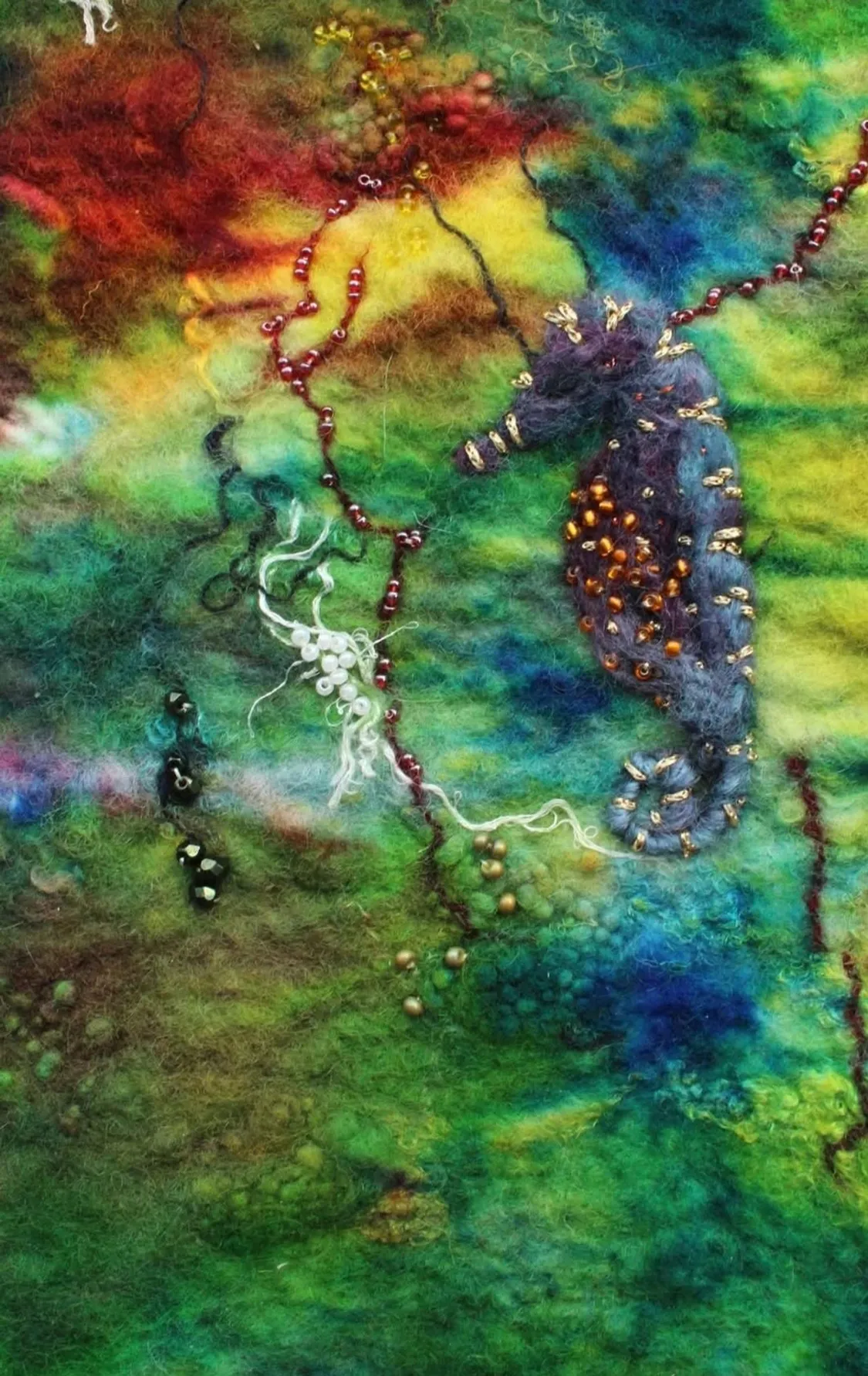
Sustainability and circularity are integrated into Sharon’s artistic process, with most of her materials being sustainably sourced or created by hand entirely. In her work, she uses a mixture of different Irish wools - such as Jacobs to create stones, Wensleydale and blue-faced Leicester for grasses, and Zwartbles wool for the bog, most of which she buys directly from Irish sheep farmers. She uses her own coiled handspun art yarn, which she sews onto wool-wrapped wire stems to create the plants featured in her landscape artworks, such as furze, heather and ferns. Dragonflies are miraculously created using wire, beads and handmade silk paper.
We were brought up in a similar way. Things were repurposed, materials were saved and used. One of the most common materials I use in all my work is white wool rescued from the Tricot marine factory which closed in the 1980s in Caherciveen. The blue wool from there was knitted into our school jumpers.
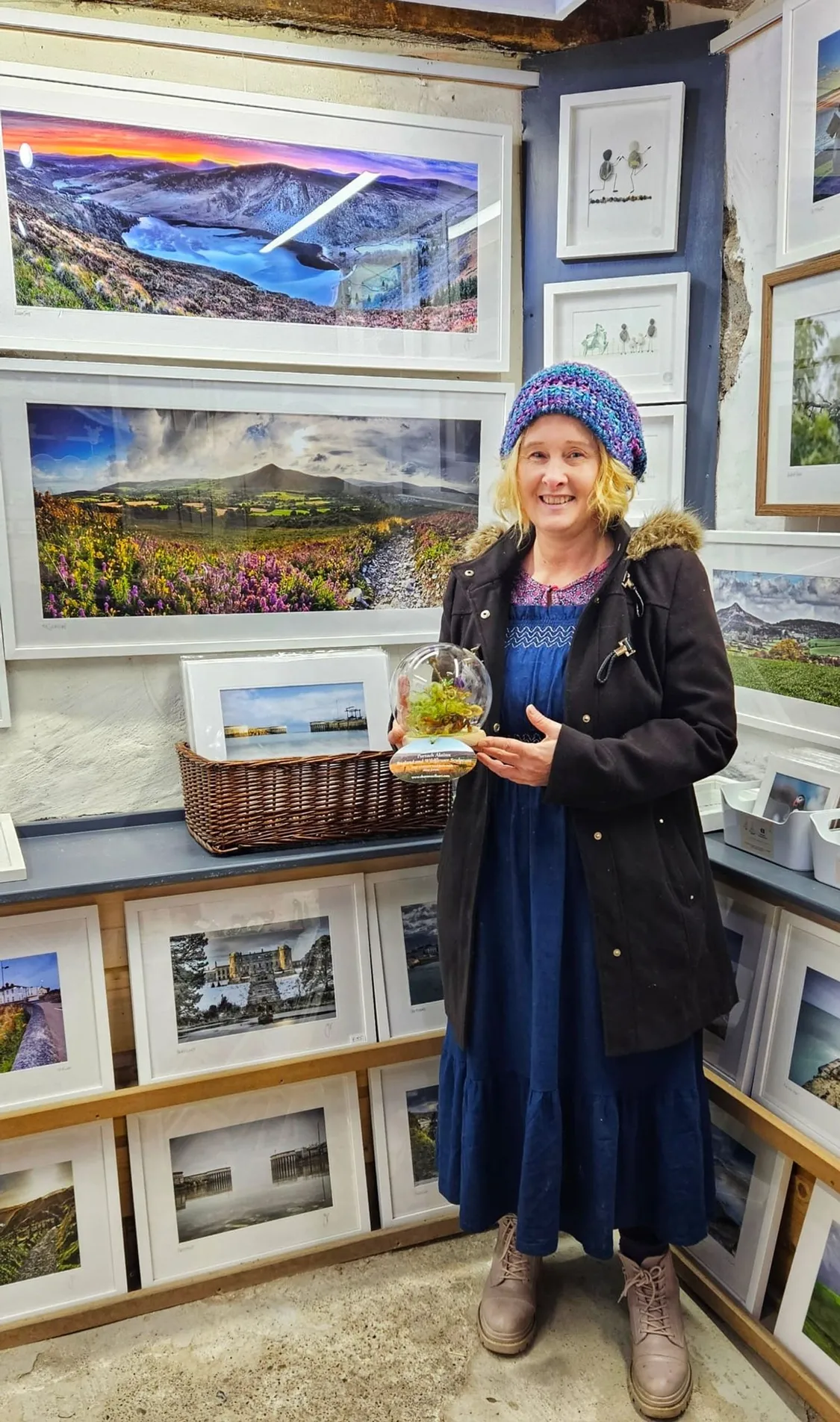
Her latest art piece, “Portach Alainn” is currently displayed at the Common Threads exhibition (7 August - 1 November 2025) at the National Design & Craft Gallery in Kilkenny. The 3-D felted sculpture features a beautiful bogland and wildflower landscape. It signifies the feeling of freedom Sharon remembers from being a child, running barefoot on the bog surrounded by the mountains.
The bog is in my blood. I study every plant and feature to imagine how my ancestors may have used it to survive. Preserving butter, dyeing yarns, cutting turf. I feel completely connected with this piece.
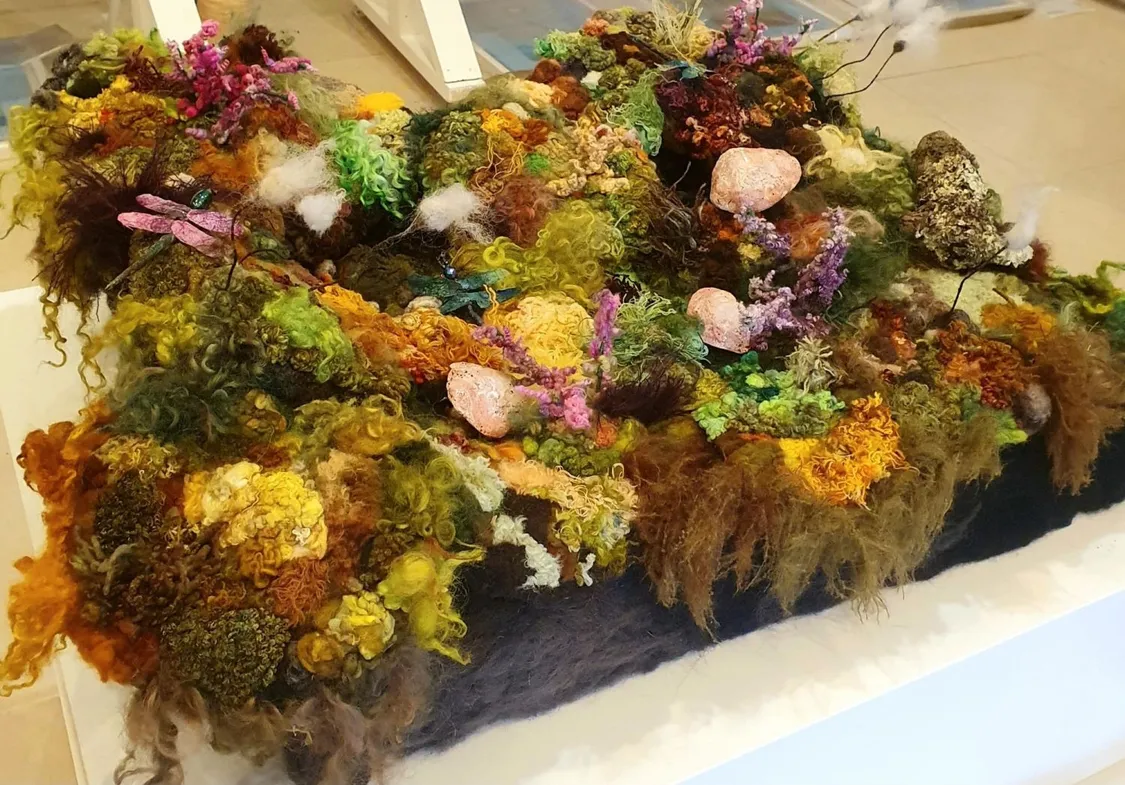
“Portach Alainn”
The Portach Alainn piece was compiled from a number of smaller pieces that Sharon had made first. They were circular and not originally meant to join together. During December and January, her parents were staying with her, and she had the idea that she really wanted the bog landscape to be physically associated with her parents. Her father helped her jigsaw-piece the 20 individual circle art pieces, and her mother assisted in sewing every piece together.
Currently, Sharon is working on her next project titled “Good Bog Bad Bog”. The project, in association with Wicklow Uplands Council, provides community group felting sessions facilitated by the Bray and North Wicklow Partnership. The outcome of the project will be exhibited on Culture Night, 19th September, in the Schoolhouse for Art in Enniskerry. The exhibition consists of a framed 90 cm diameter community ‘Good Bog’ piece featuring sphagnum moss and bog plants. Other pieces will include a large felted landscape, also framed in a 90 cm diameter frame. Accompanying these large pieces will be a smaller circular framed rock art in a bog landscape, and freestanding felted ‘Bad Bog’ pieces of eroded bog. Close-up photos of a living bog that Sharon took during the summer will be presented in a montage.
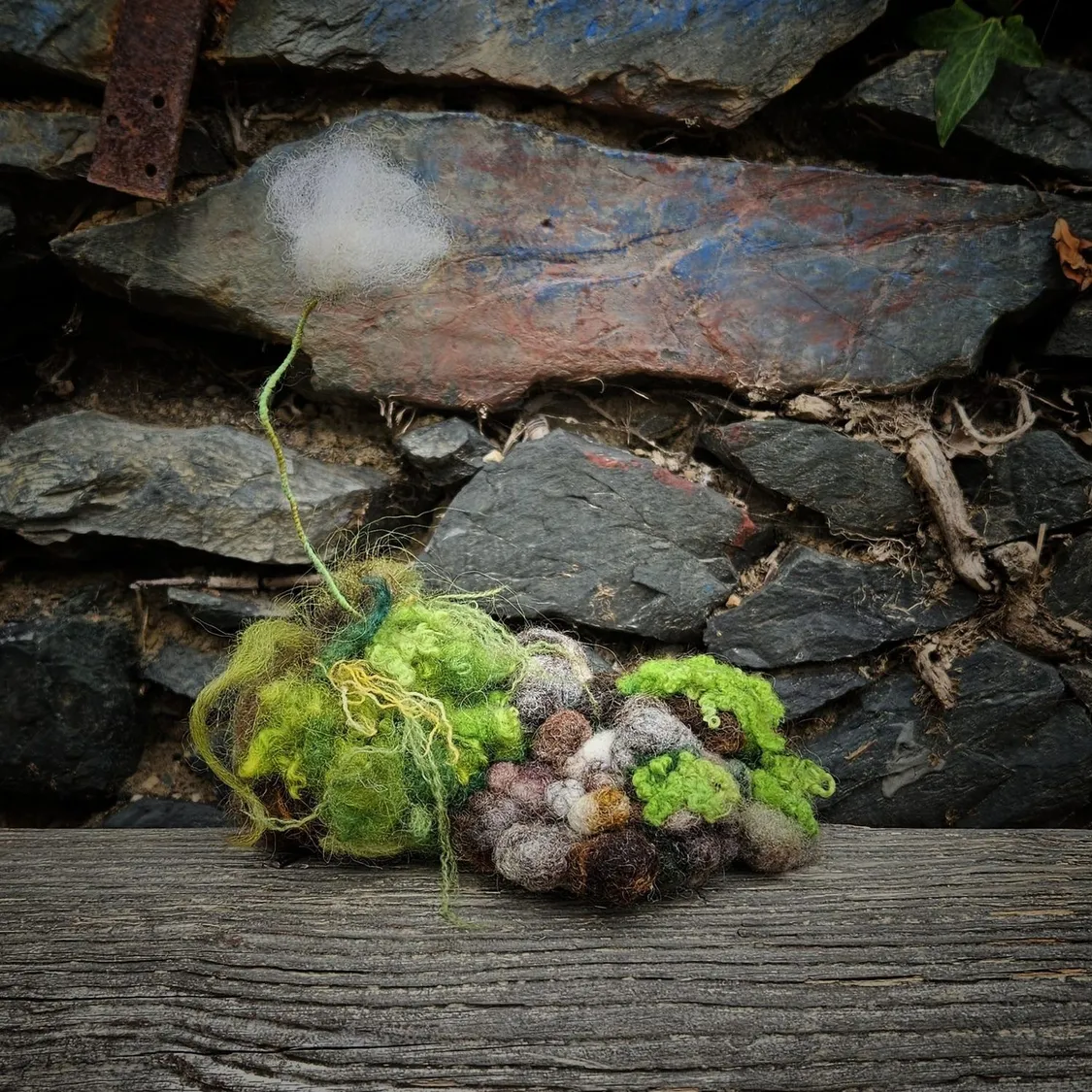
Sharon is interested in working with organisations involved in Peatland conservation and using felted art as an educational tool for schools. For further information, contact Sharon at www.sharonwellsart.com or on Instagram: @sharonwellsart.
